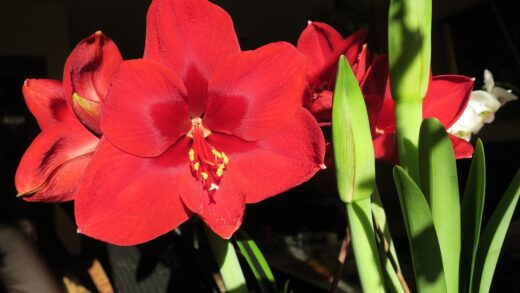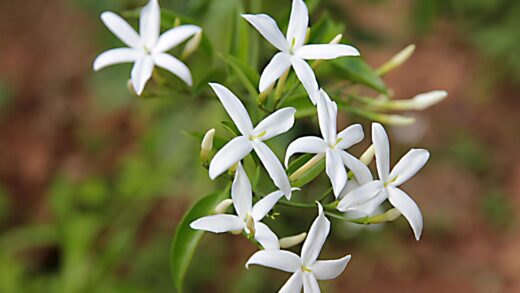The relationship between the silk acacia and sunlight is direct and unequivocal: it is a quintessential sun-loving tree. Its entire life cycle, from vegetative growth to its magnificent floral display, is powered and dictated by the intensity and duration of light it receives. The abundance of light is the primary trigger that stimulates the production of the energy-rich compounds needed to support its rapid growth and the development of its thousands of delicate, fragrant flowers. To deny this tree adequate sunlight is to fundamentally compromise its health and deprive it of the ability to express its most cherished ornamental qualities.
In its native habitat across Asia, the silk acacia is often found in open, sunny locations, on forest edges, or in clearings where it can reach for the sky without competition from a dense overstory. This genetic predisposition for high light levels is deeply ingrained and does not change when the tree is cultivated in a garden setting. Every aspect of its physiology is optimized for a high-light environment. Therefore, providing it with a location that mimics these natural conditions is not just a recommendation but a strict prerequisite for success. The amount of sunlight it receives will directly correlate with its overall vigor and beauty.
The consequences of insufficient light are stark and readily apparent. A silk acacia planted in a shady or partially shaded location will struggle to thrive. Its growth will become weak, spindly, and “leggy” as it etiolates, or stretches, in a desperate attempt to reach a light source. The canopy will be thin and sparse, lacking the dense, fern-like texture that makes it so attractive. Most significantly, flowering will be severely diminished or, in many cases, completely absent, as the tree will not have the energy reserves to invest in reproduction.
Ultimately, the decision of where to plant a silk acacia must be guided, first and foremost, by the path of the sun across the property. All other considerations, while important, are secondary to this fundamental need for light. A gardener who respects this requirement will be rewarded with a spectacular display of pink, powder-puff blooms year after year. Conversely, one who attempts to force the tree to grow in shade is destined for a frustrating experience with an underperforming and perpetually unhealthy plant. Light is the non-negotiable currency for the health and beauty of the silk acacia.
The fundamental role of sunlight
Sunlight is the primary energy source for nearly all life on Earth, and for plants like the silk acacia, it is the fuel that drives the critical process of photosynthesis. During photosynthesis, the tree uses the energy from sunlight, captured by the chlorophyll in its leaves, to convert carbon dioxide and water into glucose. This glucose is a simple sugar that serves as the fundamental energy currency for the plant. It powers every single metabolic process, from the growth of new leaves and roots to the production of complex compounds needed for defense against pests and diseases.
More articles on this topic
The vast, feathery canopy of the silk acacia, with its multitude of tiny leaflets, is a highly efficient structure for capturing sunlight. Each leaflet acts as a miniature solar panel, maximizing the surface area available for light absorption. This is why a tree grown in full sun develops such a dense and lush canopy; it is responding directly to the abundance of available energy by creating more photosynthetic machinery. A tree in a low-light situation cannot support such a large canopy and will have a much sparser, less vigorous appearance as a result.
The energy generated through photosynthesis is not only used for immediate growth but is also stored for future use. The tree converts excess glucose into more stable compounds like starch, which are stored in the roots and woody tissues. These stored energy reserves are vital for the tree’s survival through the dormant winter period and are essential for fueling the initial flush of growth in the spring. A tree that has spent the summer in full sun will have accumulated substantial energy reserves, enabling a strong start the following year.
Furthermore, sunlight acts as a powerful environmental signal that regulates many of the tree’s developmental processes, a phenomenon known as photoperiodism. The changing length of the day and the quality of light influence when the tree leafs out in spring, when it initiates flower bud formation, and when it begins to prepare for dormancy in the autumn. The high-intensity light and long days of summer are the specific cues that tell the silk acacia that conditions are optimal for flowering and reproduction.
Optimal light exposure for flowering and health
For the silk acacia to perform at its peak, it must be planted in a location that receives full sun. In horticultural terms, “full sun” is defined as a minimum of six hours of direct, unfiltered sunlight per day. However, for this particular tree, more is always better. A site that provides eight or more hours of direct sun will yield the most spectacular results in terms of both growth rate and the sheer volume of flowers produced. The most ideal positions are typically those with a southern or western exposure, which receive the most intense sunlight of the day.
More articles on this topic
The direct impact of sunlight on flowering cannot be overstated. The production of flowers is an incredibly energy-intensive process for a plant. A silk acacia grown in optimal light conditions will have a surplus of energy generated from photosynthesis, which it can then allocate to its reproductive efforts. This results in a tree that is covered in a profusion of blooms from early to mid-summer. In contrast, a tree in lower light may produce enough energy for basic survival and vegetative growth but will not have the necessary surplus to support a significant flowering event.
Beyond flowering, full sun exposure contributes to the overall structural integrity and health of the tree. In high light, the branches grow thicker and stronger, and the internodes (the spaces between leaves on a stem) are shorter, leading to a more compact and robust form. This makes the tree less susceptible to breakage from wind or the weight of snow and ice. Furthermore, direct sunlight helps to dry the foliage quickly after rain or dew, which can reduce the incidence and severity of certain fungal diseases that thrive in damp, shady conditions.
When choosing a planting site, it is crucial to consider the sun’s position throughout the entire year, not just on the day of planting. The low angle of the sun in winter and the presence of deciduous trees that leaf out in spring can dramatically change the light conditions in a particular spot. A location that seems sunny in early spring may become quite shady once a nearby maple tree is in full leaf. Aspiring silk acacia growers should therefore observe a potential site over a full day and consider the seasonal changes that will affect its light exposure.
The consequences of insufficient light
When a silk acacia is planted in an area with insufficient light, its response is predictable and detrimental to its aesthetic appeal. The most immediate and visible symptom is etiolation. The tree will produce elongated, weak, and spindly branches as it actively stretches towards the nearest light source. The growth will be thin and lanky, and the overall form of the tree will be misshapen and unnatural, lacking the graceful, spreading habit it is known for. This is a clear visual sign that the tree is light-starved.
The foliage of a shade-grown silk acacia will also be noticeably different. The canopy will be sparse and thin, with fewer leaves overall. The leaves that are produced may be larger but paler green than those on a sun-grown specimen, as the tree tries to maximize its light-capturing surface area in a low-light environment. This thin canopy not only looks unhealthy but also makes the tree less effective at photosynthesis, creating a negative feedback loop where the lack of light leads to a reduced ability to capture what little light is available.
The most significant consequence of inadequate light, and the one most disappointing to gardeners, is the impact on flowering. A silk acacia in partial or full shade will produce very few flowers, if any at all. The tree will conserve all its limited energy resources for survival and vegetative growth, and simply will not have the surplus required to initiate flower bud formation. Many gardeners who complain that their silk acacia never blooms are often trying to grow it in a location that is simply too shady for this sun-worshipping species.
In addition to poor growth and a lack of flowers, a light-deprived tree is also more vulnerable to other stresses. Its weakened state makes it more susceptible to attack by certain pests and diseases. For example, fungal leaf spots may be more prevalent because the foliage in a shady location stays wet for longer periods, creating a more favorable environment for pathogens. The overall lifespan and vigor of the tree can be significantly reduced when it is forced to grow in suboptimal light conditions.
Site selection considerations related to light
The process of selecting a site for a silk acacia must begin with a thorough analysis of the light patterns in the garden. This involves more than a casual glance; it requires observing the proposed location at different times of the day—morning, noon, and late afternoon—to get an accurate picture of how many hours of direct sun it actually receives. Remember to account for the shadows cast by the house, other buildings, fences, and, most importantly, other trees.
When considering the shadows cast by other trees, it is vital to think about their mature size. A small, newly planted oak tree nearby may not cast much of a shadow now, but in ten or twenty years, it could grow to completely shade the area where the silk acacia is planted. Planning for the long-term light environment is crucial for the long-term success of the tree. The silk acacia should ideally be planted well away from the drip line of any larger, taller trees, especially on its southern side.
The northern side of a building or a dense evergreen hedge is generally the worst possible location for a silk acacia, as these areas are in shade for most or all of the day. Conversely, an open lawn with no overhead obstructions and a clear view of the southern or western sky is the ideal scenario. Planting near a south-facing wall can be particularly beneficial, as the wall will reflect heat and light back onto the tree, creating a warm microclimate that the silk acacia will appreciate, especially in cooler regions.
In summary, the search for the perfect spot for a silk acacia is a search for sunlight. Before digging a hole, one must be absolutely certain that the chosen location meets the tree’s non-negotiable requirement for at least six, and preferably eight or more, hours of direct sun per day. This single factor will have more influence on the tree’s future health, beauty, and flowering performance than any other cultural practice. Sacrificing a little bit of lawn or rearranging a garden bed to provide this essential resource is a worthwhile investment.


















